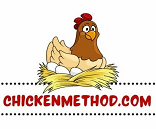Understanding the Avian Leukosis Virus (ALV) is essential for anyone who raises chickens, whether you are a seasoned farmer or just starting with your backyard flock. In this comprehensive guide, we explore the critical aspects of ALV to equip you with the knowledge to keep your flock healthy and safe.
Understanding the Avian Leukosis Virus
The Science Behind ALV
Avian Leukosis Virus belongs to the retrovirus family, a group of viruses that can integrate into the host cell’s DNA, causing various health issues in chickens. Understanding the cellular impact of the Avian Leukosis Virus in chickens can help devise strategies to prevent its spread.
Along with the Avian Flu Virus, ALV is becoming more common as chicken populations grow.
Virus Family
- Retroviridae family: ALV is part of this family known for its RNA viruses, which replicate in a host cell.
- Integration into host DNA: This is how the virus takes control, leading to diseases and, in severe cases, tumors.
History and Background
The first case of ALV was reported over a century ago. Since then, it has been a topic of extensive research. The virus has seen a fluctuation in its prevalence, affecting both backyard and commercial flocks.
First Discovery
- Early 1900s: The period when ALV was first identified, marking the beginning of a century-long study.
- Fluctuating numbers: Over the years, the number of ALV cases has seen ups and downs, a testimony to the evolving nature of this virus.
Transmission of Avian Leukosis Virus
Common Transmission Routes
ALV primarily spreads through vertical transmission, from the hen to the offspring, and horizontal transmission, which involves direct contact or sharing of equipment, aka chick-to-chick. Understanding these routes can aid in preventing the spread of the virus.
Not all chicks of infected hens get the virus, but if one chick has it, it spreads quickly.
Vertical and Horizontal Transmission
- Vertical: From mother to offspring, mainly through the egg.
- Horizontal: Through direct contact, sharing feeders and drinkers.
Identifying High-Risk Factors
Certain conditions favor the transmission of the Avian Leukosis Virus, including overcrowded spaces and poor sanitation. Awareness of these can help create a safe environment for your chickens.
Conditions Favoring Transmission
- Overcrowding: Ensuring ample space can significantly reduce the risk.
- Poor sanitation: Regular cleaning can prevent the virus from finding a foothold.
Symptoms and Diagnosis
Recognizing the Symptoms
Early detection of ALV symptoms, which include lethargy, weight loss, and reduced egg production, can be a lifesaver. Keeping a vigilant eye on your flock to notice any irregularities is vital.
Symptoms List
- Depression and Lethargy: Infected birds often exhibit reduced activity levels and may appear depressed.
- Weight Loss: Chickens suffering from ALV may experience significant weight loss over time as the disease progresses.
- Reduced Egg Production: A noticeable decrease in egg production is a common symptom for laying hens. The eggs that are produced might be of poor quality.
- Enlarged Abdomen: In some cases, birds develop an enlarged abdomen, often a sign of tumor development in the internal organs.
- Tumors: ALV is known to cause tumor development in various organs, including the liver, spleen, and kidney. These tumors are often visible as lumps under the skin.
- Paralysis: In severe cases, birds might exhibit signs of paralysis, often resulting from nerve damage caused by tumor growth.
- Pale Comb and Wattles: The comb and wattles of infected birds might turn pale, indicating poor health conditions.
- Diarrhea: Infected birds might experience diarrhea, leading to dehydration and health complications.
- Respiratory Distress: Although not very common, some birds might exhibit signs of respiratory distress, including difficulty breathing and increased respiratory rate.
- Immune Suppression: ALV can suppress the immune system of the infected birds, making them more susceptible to other infections.
Diagnostic Methods
If you suspect an ALV infection in your flock, getting a proper diagnosis through available tests is advisable. Early detection can aid in managing the outbreak effectively.
Diagnostic Tests
- Blood tests Can help in identifying the virus.
- Necropsy: In severe cases, a post-mortem examination can be conclusive.
Management and Control
Preventative Measures
Preventing ALV involves implementing biosecurity measures and considering vaccination. Creating a safe and clean environment is your first defense against the virus.
The virus doesn’t live long in the environment and is easily destroyed by disinfectant.
Biosecurity Measures
- Quarantine new birds: Before introducing new birds to your flock, ensure they are ALV-free.
- Regular cleaning: Maintain cleanliness to avoid creating a breeding ground for the virus.
Managing an Outbreak
In case of an outbreak, it is crucial to manage it effectively to prevent further spread. This involves isolating affected birds and, in severe cases, culling to protect the rest of the flock.
Steps to Take
- Isolation: Separate the sick birds immediately.
- Culling: In severe cases, it might be necessary to cull the affected birds to protect others.
Frequently Asked Questions
In this section, we answer some of the most common questions about ALV, including its impact on humans and the necessary steps in case of an outbreak.
- Reporting an outbreak: In many regions, reporting an ALV outbreak is mandatory. Ensure to check the regulations in your area.
- Effect on humans: Currently, no evidence suggests that ALV affects humans. However, maintaining hygiene is always recommended.
- Safe disposal: Ensure to follow guidelines for the safe disposal of birds affected by ALV.
Understanding and managing Avian Leukosis Virus is crucial in maintaining a healthy flock. We hope this guide has equipped you with the knowledge to prevent and control ALV effectively. Remember, a healthy flock is a happy flock!
References
For further reading and to deepen your understanding, consider checking out resources from reliable sources to stay informed and keep your flock safe from the Avian Leukosis Virus.
Thanks for reading. When your chickens get sick, it’s never a good thing. I hope I can help in some small way.
Dave
Chckenmethod.com

